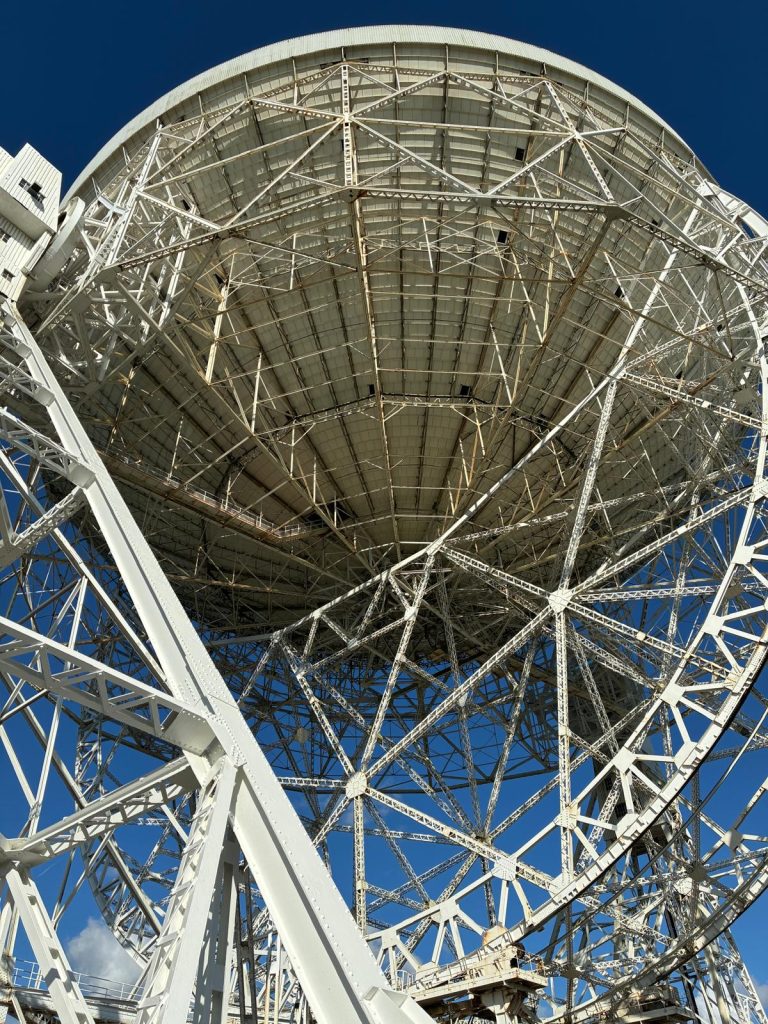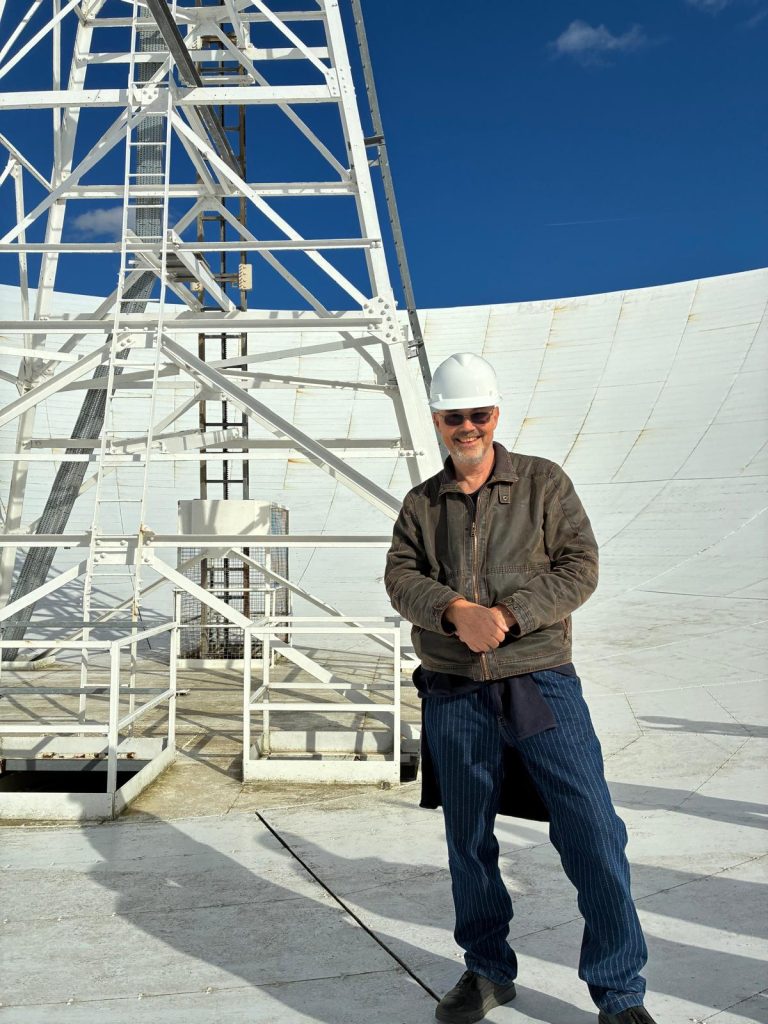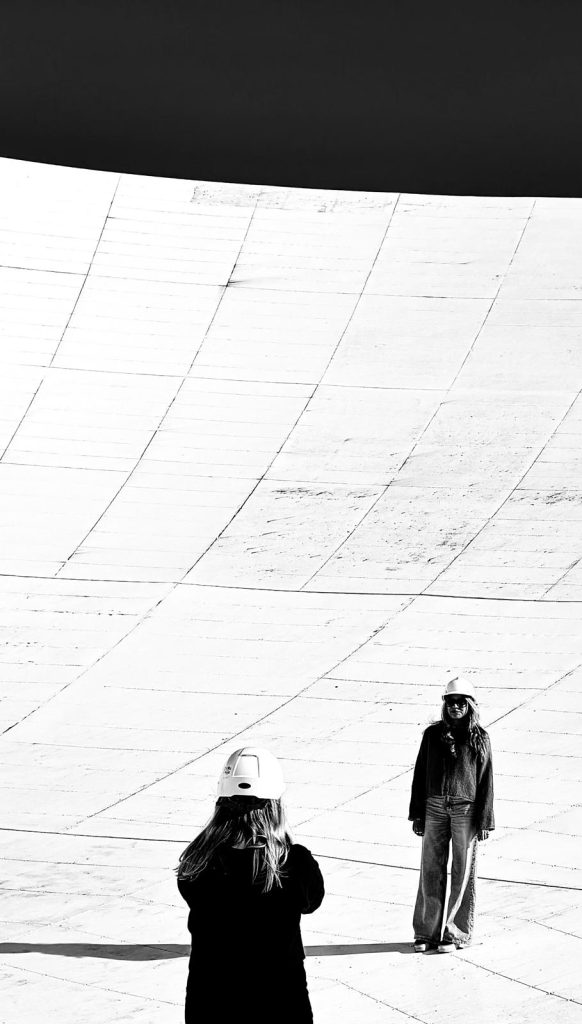
This vast structure is the main radiotelescrope at Jodrell Bank, near Macclesfield, where I and a bunch of other writers spent the day last week. This was as part of an ongoing project of Comma Books in which they pair up a set of writers with a set of scientists to create a series of original short story anthologies inspired by real science. In this case, the scientists were astronomers at Jodrell Bank. The main Lovell Telescope was the largest steerable radiotelescope in the world when it was built in 1957, and is still one of the largest. It’s apparently so powerful that it could detect a mobile phone on Mars, in the unlikely event that someone lost one there – and it needs to be that powerful, because one of its purposes is to detect radio waves originating so far away that they have been spreading out through space, like ripples on a pond, for billions of years.
We got to climb up the telescope and walk around in its enormous white bowl. (I was surprised we could do this, given that this is a precision instrument whose surface is supposed to be smooth to an accuracy of 1mm, but it is very solid and robust.) Here I am, looking rather pleased with myself.

During the day, the writers would ask each other, ‘So who is “your” astronomer?’ ‘My’ astronomer is Ida Janiak, who, apart from being extremely nice, is interested in exoplanets and alien life, and has a particular expertise in optical telescopes. She is going to help me write a story about a ‘free-floating planet’ (or ‘rogue planet’), a planet without a star. I have already written a whole trilogy set on one of these called Eden, but when I originally came up with the idea (for a short story called ‘The Circle of Stones’ back in 1992), I honestly didn’t know that such things really existed. It just seemed to me a plausible possibility that planets could form from dust and gas in space like stars do, or could spin out from a solar system, and I went with my own ideas of what it might be like.
With Ida’s help I am now going to write a story about a FFP that, this time, is more or less scientifically accurate, and so isn’t very much like Eden. There is, however, a scientific consensus, as I understand it, that an FFP with a hot core could sustain life without the help of a star. And that does concur with my own original intuition.
